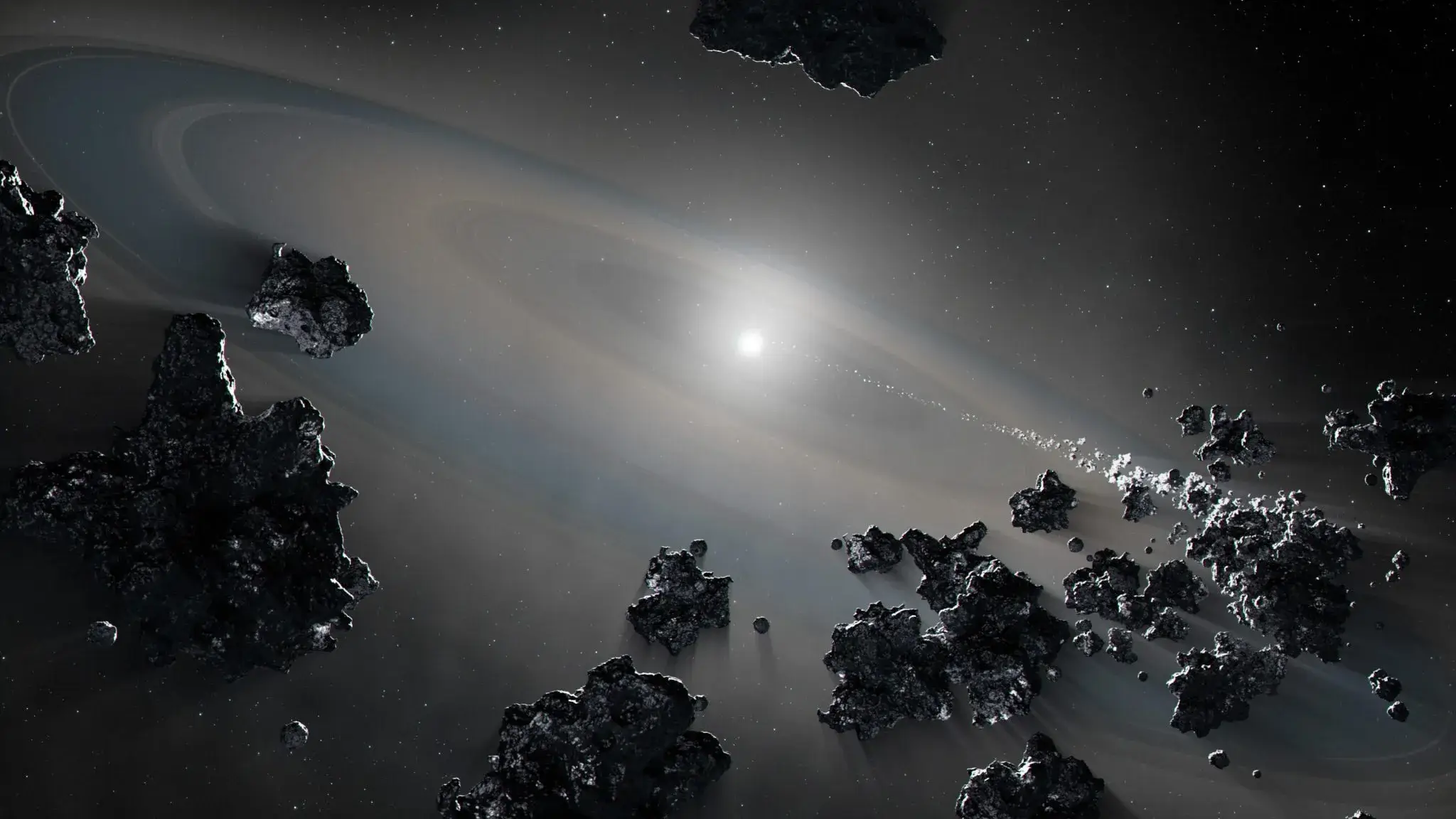A white dwarf provides insights into the systemic chaos that occurs when a star dies

The violent death flickers of a nearby star have caused such severe disruption to its planetary system that the dead star left behind — known as a white dwarf — sucks in debris from both the inner and outer reaches of the system, UCLA astronomers and their colleagues report.
This is the first case of cosmic cannibalism in which astronomers have observed a white dwarf star devouring both rocky-metallic material, probably from a nearby asteroid, and icy material, probably from a body similar to the bodies found in the Kuiper belt at the edge of our solar system.
"We've never seen these two types of objects coalesce into a white dwarf at the same time," said lead researcher Ted Johnson of UCLA. "We hope that the study of these white dwarfs will help us better understand planetary systems that are still intact."
The conclusions are based on an examination of materials captured by the atmosphere of G238-44, a white dwarf located about 86 light-years from Earth, using archival data from the Hubble Space Telescope and other NASA satellites and observatories. A white dwarf is the extinguished core that remains after a star similar to our Sun sheds its outer layers and stops burning fuel through nuclear fusion.
As surprising as the varied diet of the white dwarf may be, the findings are also intriguing because astronomers believe that icy objects crashed into dry and rocky planets in our solar system and watered them - including Earth. It is thought that billions of years ago, comets and asteroids brought water to our planet, creating the conditions necessary for life. The composition of the shower of material discovered falling on G238-44 suggests that ice reservoirs may be common in planetary systems, said study co-author Benjamin Zuckerman, a professor of physics and astronomy at UCLA.
"Life as we know it requires a rocky planet covered in a variety of volatile elements such as carbon, nitrogen and oxygen," Zuckerman said. "It seems that the abundance of elements we see in this white dwarf came from a rocky parent body and also from a highly volatile parent body - the first example we found among hundreds of studies of white dwarfs."
Theories of the evolution of planetary systems describe the death of a star as a turbulent and chaotic event, which begins with it first greatly inflating into a so-called red giant and then quickly losing its outer layers and collapsing into a white dwarf - a very dense star about the size of the Earth, with the mass of the Sun our. The process dramatically disrupts the orbits of the remaining planets, and smaller objects - asteroids, comets, moons - that are too close can scatter like billiard balls and move violently toward the white dwarf.
This study confirms the true order of magnitude of the chaos, showing that 100 million years after the start of its white dwarf phase, the star can simultaneously capture and consume material from the nearby asteroid belt and the distant Kuiper belt-like regions.
More of the topic in Hayadan:
